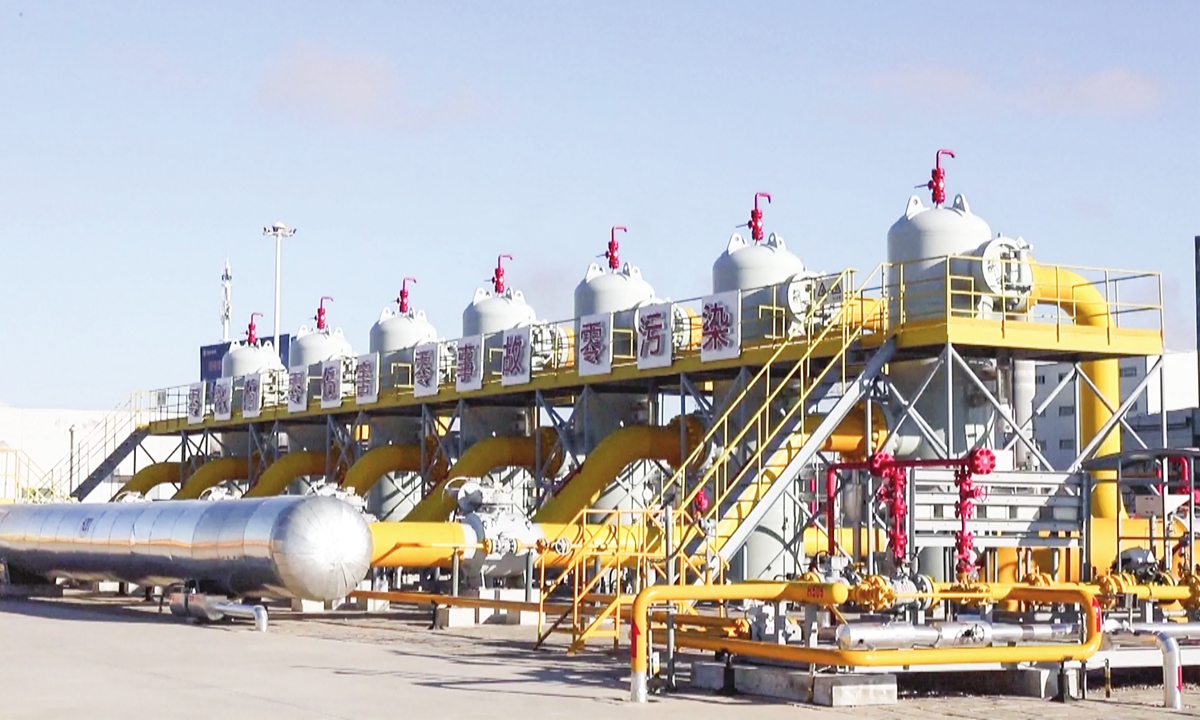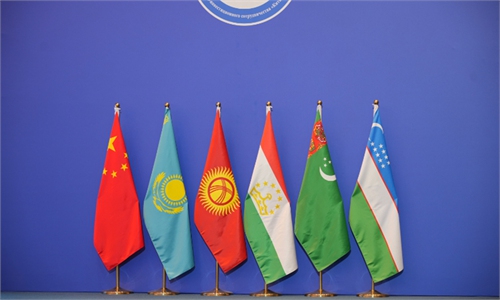
The Horgos initial compressor station in Northwest China's Xinjiang Uygur Autonomous Region is the first station of the China-Central Asia Gas Pipeline in China, and is also a critical point of China's West-to-East Gas Pipeline. Photo: cnsphoto
Energy cooperation, a ballast stone for China-Central Asia cooperation for decades, is to witness accelerated growth in the coming months and years, after delivering noteworthy results that have benefited regional countries.
The importance of energy cooperation is expected to be highlighted at the China-Central Asia Summit convened this week in Xi'an city, northwestern China, a landmark gathering to provide a key opportunity to review the outcomes of cooperation and inject new momentum into Belt and Road Initiative (BRI) development in Central Asia.
This year marks the 10th anniversary of the China-proposed BRI. Over the last decade, Central Asia has become a demonstration zone of how the BRI delivers win-win cooperation results, exemplified by energy cooperation in the region.
From cooperation in traditional energy sources such as oil and natural gas to joint endeavors to tap into green energy sources and the building of an international corridor for energy transportation that features a high degree of economic complementarity, energy cooperation has borne growing fruits now.
The Central Asia-to-China gas pipeline, constructed and operated by the Sino-Pipeline International arm of the CNPC, began operations with Line A in 2009, Line B in 2010, and Line C in 2014, which has a combined transport capacity of 55 billion cubic meters per year. The three lines, running in parallel, zigzag across 1,833 kilometers from Uzbekistan and Kazakhstan to northwest China.
Corridors of prosperity
The construction of the pipeline network set up an unrivalled record in construction speed among transnational natural gas pipelines, said Sino-Pipeline International, noting that the pipelines represent "significant importance" in safeguarding the common interests of oil and gas resource-producing countries and consuming countries.
The construction and operation of the pipelines have contributed in concrete terms to social and economic development along their respective routes. The pipelines, which took years to build, have become a bond that contributes to the long-term stability of bilateral and multilateral ties among countries in the region.
Over the years, the pipeline network has created more than 1,600 jobs in Uzbekistan and Kazakhstan. In 2022, the Central Asia-to-China pipeline network supplied 43.2 billion cubic meters of natural gas to China, effectively safeguarding China's natural gas consumption.
Jin Lei, a professor at the China University of Petroleum, told the Global Times on Thursday that as the overland pipeline is a completed project and is more secure and controllable than natural gas trading via ocean routes, the throughput of energy will definitely increase in the future.
The Line D, which is currently under construction, will further enhance BRI cooperation as the route links up more Central Asian countries, Jin noted.
A crude oil pipeline from Central Asia countries to China is also the first of China's overland energy import arteries, underlining the region's importance to the joint BRI efforts.
Wan Zhe, a professor at the Belt and Road School at the Beijing Normal University, told the Global Times on Thursday that the energy cooperation between China and Central Asia, many being the earlier installments of mutually beneficial cooperation between the two sides, have played a vital role in ensuring China's energy security.
In 2022, China's imports of agricultural, energy, and mineral products from Central Asian countries jumped by over 50 percent, while its exports of mechanical and electronic products to them increased by 42 percent, according to China's Minister of Commerce in April.
Improving energy security
In addition to cooperation on hydrocarbons, the region has also become a major platform for the implementation of the Green Silk Road drive, with the countries seeing an increasing amount of installation of renewable energy sources such as wind and solar, according to Chinese experts.
In recent years, Central Asian countries have attached increased emphasis onto the transition from traditional energy sources toward renewable and green energy sources, with efforts spent on diversifying their economies and upgrading their exports from raw materials to high-value-added products.
As part of this drive, cooperation between China and these countries holds great potential.
"For instance, multiple countries have expressed their intention to develop hydrogen energy, one of the future renewable energy sources," Wan said, noting that the scope for production capacity cooperation is huge with China's whole-supply-chain advantage.
For Tajikistan and Kyrgyzstan, which hold much of the region's fresh water, the prospect of developing hydrogen energy is great, Wan said, noting that the Central Asia-to-China pipeline network can be adopted to transport hydrogen at some point in the future to make the transportation of energy exports more diversified, experts said.
The 100-MW Zhanatas wind farm, made operational in June 2021, is one of the first and largest key energy projects under the China-Kazakhstan production capacity cooperation framework.
The project has brought equipment and investment to Kazakhstan, greatly alleviating a power shortage in southern Kazakhstan, and helped train local talent in clean energy, Xinhua reported earlier, citing Maksat Abilgaziev, a resident of the town and a worker at a wind farm.
In 2022, two-way trade between China and the five Central Asian countries reached a record high of $70.2 billion, data from the Ministry of Commerce showed.
As of the end of 2022, China's gross direct investment in the five Central Asian countries had reached nearly $15 billion, with the cooperation projects covering oil and gas exploration, processing, and manufacturing, and connectivity and digital technology.


